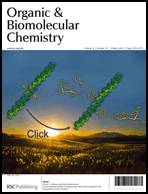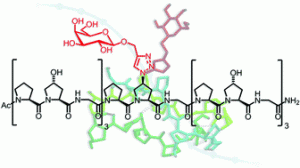This month sees the following articles in Organic & Biomolecular Chemistry that are in the top ten most accessed:
Is nevirapine atropisomeric? Experimental and computational evidence for rapid conformational inversion
Edmund W. D. Burke, Gareth A. Morris, Mark A. Vincent, Ian H. Hillier and Jonathan Clayden
Org. Biomol. Chem., 2012, 10, 716-719
DOI: 10.1039/C1OB06490H
A one-pot catalysis: the strategic classification with some recent examples
Nitin T. Patil, Valmik S. Shinde and Balakrishna Gajula
Org. Biomol. Chem., 2012, 10, 211-224
DOI: 10.1039/C1OB06432K
N-Heterocyclic carbene catalysed aerobic oxidation of aromatic aldehydes to aryl esters using boronic acids
Panjab Arde, B. T. Ramanjaneyulu, Virsinha Reddy, Apurv Saxena and R. Vijaya Anand
Org. Biomol. Chem., 2012, 10, 848-851
DOI: 10.1039/C1OB06566A
Direct preparation of thiazoles, imidazoles, imidazopyridines and thiazolidines from alkenes
Timothy J. Donohoe, Mikhail A Kabeshov, Akshat H. Rathi and Ian E. D. Smith
Org. Biomol. Chem., 2012, 10, 1093-1101
DOI: 10.1039/C1OB06587D
Towards the systematic exploration of chemical space
Mark Dow, Martin Fisher, Thomas James, Francesco Marchetti and Adam Nelson
Org. Biomol. Chem., 2012, Advance Article
DOI: 10.1039/C1OB06098H
Fluoride-selective optical sensor based on the dipyrrolyl-tetrathiafulvalene chromophore
Shadi Rivadehi, Ellen F. Reid, Conor F. Hogan, Sheshanath V. Bhosale and Steven J. Langford
Org. Biomol. Chem., 2012, 10, 705-709
DOI: 10.1039/C1OB06459B
Syntheses of furo[3,4-c]coumarins and related furyl coumarin derivatives via intramolecular Wittig reactions
Yeong-Jiunn Jang, Siang-en Syu, Yu-Jhang Chen, Mei-Chun Yang and Wenwei Lin
Org. Biomol. Chem., 2012, 10, 843-847
DOI: 10.1039/C1OB06571H
Synthesis and biological activity of phosphonoacetate- and thiophosphonoacetate-modified 2′-O-methyl oligoribonucleotides
Richard N. Threlfall, Adrian G. Torres, Angelika Krivenko, Michael J. Gait and Marvin H. Caruthers
Org. Biomol. Chem., 2012, 10, 746-754
DOI: 10.1039/C1OB06614E
C–H functionalization of tertiary amines by cross dehydrogenative coupling reactions: solvent-free synthesis of α-aminonitriles and ß-nitroamines under aerobic condition
Kaliyamoorthy Alagiri and Kandikere Ramaiah Prabhu
Org. Biomol. Chem., 2012, 10, 835-842
DOI: 10.1039/C1OB06466E
Calixarene-induced aggregation of perylene bisimides
Dong-Sheng Guo, Bang-Ping Jiang, Xiang Wang and Yu Liu
Org. Biomol. Chem., 2012, 10, 720-723
DOI: 10.1039/C2OB06973C
Why not take a look at the articles today and blog your thoughts and comments below.
Fancy submitting an article to Organic & Biomolecular Chemistry? Then why not submit to us today or alternatively email us your suggestions.
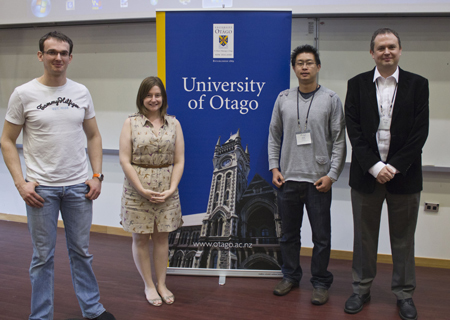













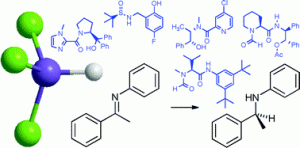
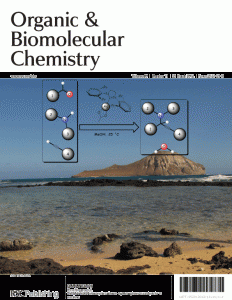
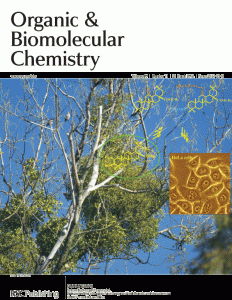
 Effective 1,5-, 1,6- and 1,7-remote stereocontrol in reactions of alkoxy- and hydroxy-substituted allylstannanes with aldehydes
Effective 1,5-, 1,6- and 1,7-remote stereocontrol in reactions of alkoxy- and hydroxy-substituted allylstannanes with aldehydes Microwave-assisted regioselective ring opening of non-activated aziridines by lithium aluminium hydride
Microwave-assisted regioselective ring opening of non-activated aziridines by lithium aluminium hydride